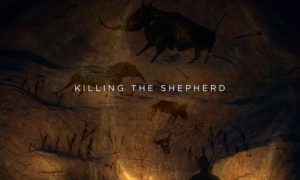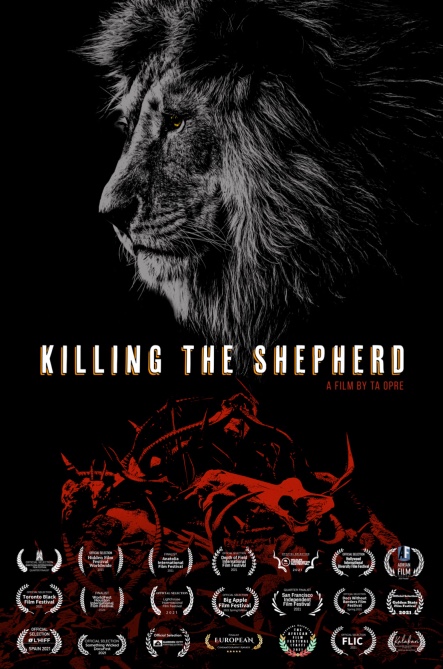Event Cinema
Killing the Shepherd | Wednesdays for the Planet | World Wildlife Day

23 Feb 2022
13:30
Venue: Online | Webex
Organization: Geneva Environment Network, Convention on International Trade in Endangered Species of Wild Fauna and Flora
Wednesdays for the Planet is a series of online screenings and discussions highlighting the natural world and some of the environmental challenges our planet faces. The virtual screenings are for educational purposes, non-profit and non-commercial. This special session is organized in the run-up to World Wildlife Day, and will feature a live discussion with experts on wildlife and species conservation.
World Wildlife Day
World Wildlife Day celebrates the beautiful and varied forms of wild fauna and flora and to raise awareness of the multitude of benefits that their conservation provides to people. At the same time, World Wildlife Day reminds us of the urgent need to step up the fight against wildlife crime and human-induced reduction of species, which have wide-ranging economic, environmental and social impacts. Each year, World Wildlife Day is celebrated on 3 March, the day of signature of the Convention on International Trade in Endangered Species of Wild Fauna and Flora (CITES) in 1973.
World Wildlife Day 2022 is held under the theme « Recovering key species for ecosystem restoration » to raise awareness of the state of endangered and critically endangered wildlife, and to highlight the power of conservation efforts seeking to reverse their fate. Leading up to the year when the post-2020 Global Biodiversity Framework is expected to be adopted, drawing attention to the status of some of the most critically endangered species of wild fauna and flora and their role in ecosystems will send a powerful message for urgent commitment. The theme also highlights the impact of conservation efforts and promotes best practice examples where species were brought back from the brink, and drives discussions towards imagining and implementing new solutions to conserve and sustainably use others.
Documentary
Killing the Shepherd
A remote community in Africa, led by a woman chief, attempts to break the stranglehold of absolute poverty by waging a war on wildlife poaching. For decades illegal wildlife poaching by both subsistence and bush meat gangs has led to the government declaring this community’s homeland “depleted” of wildlife.
The chief finds help in the form of a safari operator and they work together to bring stability to the community. But all was not well. Disease, food stability, and rampant alcoholism hamper basic needs like health care and education. Even young girls, just after reaching puberty, are sold by their parents as child brides in order to feed their family for one year. Dark forces including South African land speculators, criminal poaching gangs, and her own people conspire against the chief. Even elements from the modern world work against the chief’s wishes.
Will the chief and her community see success?

Online Screening
Watch the documentary (30 minutes) in advance of the live discussion. We would like to thank the film director, TA “Tom” Opre, for this exclusive screening.
Experts

TA "Tom" OPRE
Founder, Shepherds of Wildlife Society

Adam HART
Scientist, author and broadcaster, University of Gloucestershire

Maxi LOUIS
Director, Namibian Association of CBNRM Support Organisations (NACSO)
Live Discussion Video
In addition to the live WebEx and Facebook transmissions, the video will be available on this webpage.
Summary
Ivonne HIGUERO | Secretary-General, CITES
- Welcome, and let me thank the Geneva Environment Network for organizing this event and the invitation to speak. I am grateful that you are helping us celebrate World Wildlife Day with this discussion of the film Killing the Shepherd, which I hope you have all had a chance to watch. The film addresses many of the issues we work on at CITES. Wildlife conservation in a poor country such as Zambia poses a particular set of challenges and the film provides plenty of food for thought about how to address those challenges. Congratulations and thanks to the film director who is here with us today, Tom Opre, for this exclusive screening.
- The alarming decline of wildlife around the world has many causes: land conversion and habitat destruction are particularly important drivers of wildlife loss. When an ecosystem is converted to farmland, or when it is cleared of timber or other plant resources, or when climate change affects rainfall and temperature and alters the mix of plant life, most of the wild animals living there will either die or leave. Habitat loss is a complex issue that is strongly linked to the human population and economic trends.
- Another major driver, illustrated by this film, is poaching. This is a serious concern for Africa’s big five: elephants, rhinos, lions, leopards and buffalos, but also for many other species in many other parts of the world. As the film explains there are two kinds of poachers, each one with different motivations, community poachers are local people driven by poverty to take bushmeat or to obtain wild animals or products for personal use or for income. Commercial poachers, on the other hand, are often heavily armed people coming from outside the community. They have links to illegal international trade and are motivated solely by money. Because of the link to illegal international trade, poaching is a major concern at CITES.
- Unfortunately, people living with wildlife may often see no benefit from the survival of the wild animals around them, many of which can be quite dangerous. If they lack access to good health, food, education and jobs, they can be driven by poverty to exploit wildlife in a way that undermines the species’ survival.
- The story told in this film is about how safaris engage the local community by creating jobs in the safari industry while also supporting other development activities, describes one conservation approach that has been recognized as effective. While strict protection can be the best approach to ensuring the survival of wildlife in many cases, in other situations the sustainable use of wildlife can be a more effective option. CITES parties may consider sustainable consumptive and non-consumptive wildlife use approaches in line with the convention regulations to best conserve their wildlife. For your information, many of you may know already that in 2016, for example, CITES parties unanimously adopted a resolution that acknowledge the benefits of well-managed trophy hunting and trade in hunting trophies.
- The film also speaks to the theme of this year’s World Wildlife Day which we will celebrate on Thursday 3 March. Because the faiths of individual species and entire ecosystems are intimately linked, we are focusing this year on how we can protect keystone species that are a vital part in shaping how their ecosystem functions, including apex predators such as lions and their contributions to ecosystem health. The theme of recovering key species for ecosystem restoration contributes fully to the ambitions of the United Nations Decade on Ecosystem Restoration, which runs from 2021 to 2030.
- I take this opportunity to invite you to join us for our World Wildlife Day celebration on Thursday 3 March at 2 PM CET. The event will feature some high-level presenters and six diverse stories from people running projects in the field. The link to the YouTube channel where you can watch the proceedings is posted on our website at www.wildlifeday.org It promises to be both educational and enjoyable.
- We all have a role to play in wildlife conservation and ecosystem restoration. At CITES, governments set the rules for international trade on wildlife. These rules also affect the hunting, harvesting and collection of specimens that leads to trade. CITES uses a rigorous system of trade permits to ensure that trade in at-risk species is sustainable. When a plant or animal species are threatened by extinction, CITES is often goes further and bans all commercial trade in these species. CITES decisions are science-based and pragmatic.
More coming soon.

